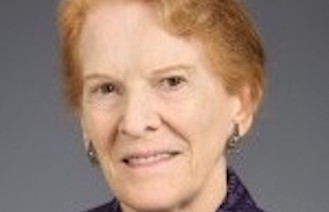by John Trybus, Managing Director
Spend even ten minutes with Esta de Fossard-Nelson and you’re bound to be smiling ear-to-ear, drawn into her amazing life’s story as I was. She’s a storyteller. She’s an actress. She’s Australian. She’s a professor. She’s worked around the globe in more than 52 countries. She’s an author. And yes, she’s a social strategist.
Esta also happens to be (without question) one of the world’s leading authorities and a pioneer on the subject and practice of entertainment-education.
But first things first. What is entertainment-education, you ask?
Here is Esta’s formal definition: “Using an entertainment format through which to educate people about important changes that they can make in their lives and that will greatly improve their lives.”
To be clear, Esta is not talking about All My Children, One Life to Live or any of the other soap operas on television today. Sorry Susan Lucci!
Rather she is referring to recurring serial programs, either on radio or TV, created with strategic messaging and believable characters used to persuade viewers or listeners to change or solidify behavior to make their lives better in some way.
Entertainment-education projects are working to tackle some of society’s biggest challenges, particularly in the developing world. Think topics such as HIV/AIDS, family planning, female circumcision and gender equality.
Here’s a preview of Esta’s tips for successful entertainment-education:
- Walk in the shoes of your audience. Literally! There is no substitute for spending the time to live among and observe the audience of which you are trying to influence. Esta says: “Know your audience. Why are they behaving the way that they are?” Answering that question will help develop appropriate story lines that resonate and improve people’s lives.
- Engage viewers and listeners with true emotion. And then repeat. “Emotional attachment – more than anything else – will keep them watching or listening,” Esta says. She recommends that only once you have earned an audience’s attention is when you gradually lead them into the behavior change you wish them to make. Character development and not using well-known, famous actors are ways in which to bring about emotional connections. Esta says that behavior change through entertainment-education is achieved when there is at least six months of weekly programming, if not longer.
- Leave your ego at the door and believe in the change you wish to make. Like all good strategic communications, you must evaluate if entertainment-education is achieving the desired goal and objectives. One way to do this is to make the programs interactive by posing questions to the audience and asking them to submit answers to producers. Yet, according to Esta, the key ingredient to success is something else entirely: heart. “I love every minute of it. And to see the difference that you can make in people’s lives…there is nothing more rewarding. Quite honestly there isn’t,” she says passionately.
Want to learn more about this week’s social strategist, Esta de Fossard-Nelson and the topic of entertainment-education? Take a listen to my interview.

